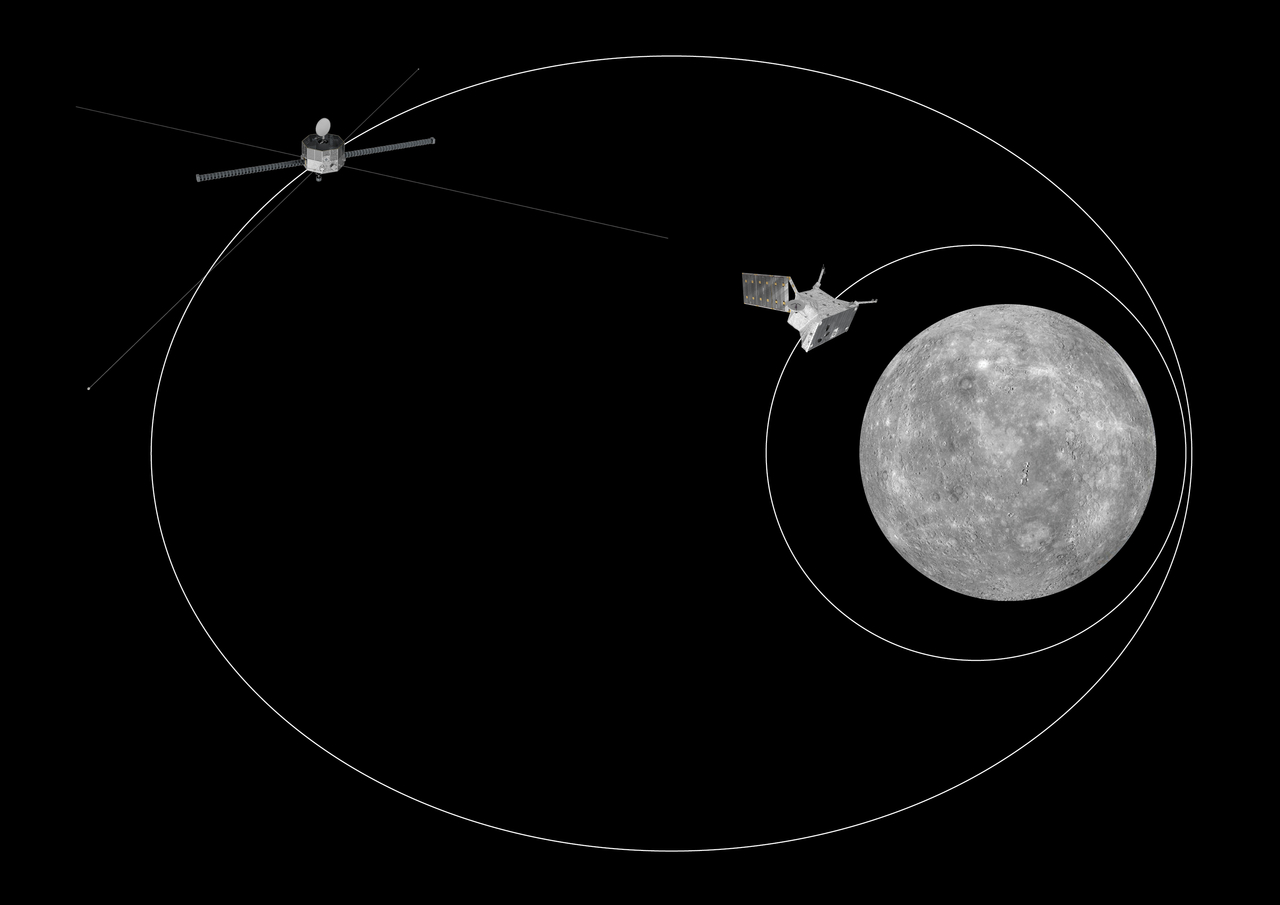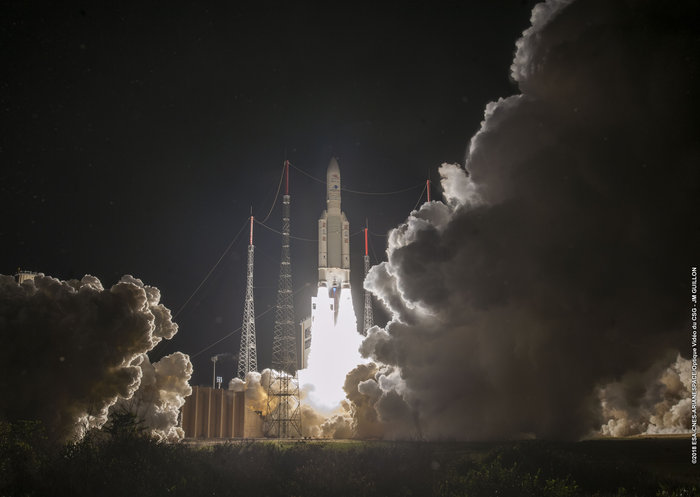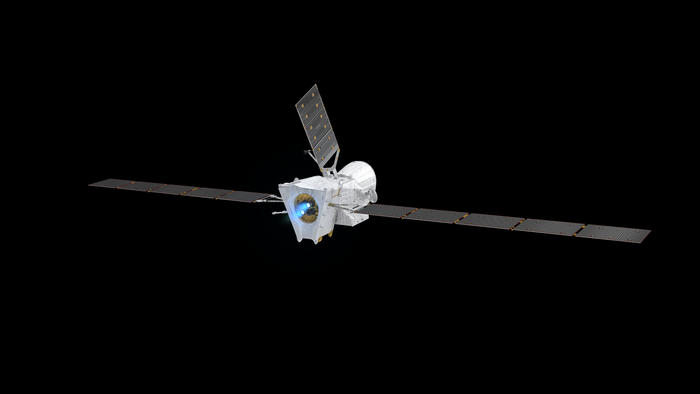French National Center for Scientific Research (CNRS) | 2018 Oct 17
Known since Antiquity, Mercury has not yet delivered all its secrets. The international mission BepiColombo, scheduled to launch in the coming days, will study the planet's surface and compare its magnetic field with that of the Earth.
Apart from Earth, Mercury is the only terrestrial planet with its own magnetic field, and yet it has only been visited by two space missions so far. This is indeed no easy task: because it is so close to the Sun, a spacecraft that misses the Swift Planet's weak gravitational field will inevitably plunge towards the solar surface, heated to a fiery 5,500 °C.
The European and Japanese space agencies, ESA and JAXA, have therefore worked in close collaboration to ensure BepiColombo’s success. The mission, which comprises two orbiters, is scheduled to launch from Kourou, French Guiana, on the night of 19-20 October aboard an Ariane 5 rocket. After a seven-year journey and two flybys of Venus to benefit from a gravity assist, it will then survey Mercury’s surface, atmosphere and magnetosphere for two years, until 2027. ...
The BepiColombo mission comprises two orbiters carrying a science payload of nearly 100 kilograms. The first one, MPO (Bepi), will be dedicated to fully mapping the planet and studying its surface, internal structure and exosphere, while the second, MMO (renamed Mio), will study its magnetic environment. Once at their destination, Mio will be released first, followed by Bepi, which will be placed into the lowest orbit ever achieved around Mercury. ...
Innovative UK-led space technology takes off on BepiColombo
University of Leicester, UK | 2018 Oct 17
Journey to Mercury with Involvement from Bern
University of Bern | 2018 Oct 17
Strofio Will Measure Mercury's "Exosphere"
Southwest Research Institute | 2018 Oct 16




